The world knows we are in the early stages of a massive energy transition. Most governments and companies know this as well. Even though progress is too slow, the momentum is in the right direction. A recent study by fossil fuel think tank, Ember, revealed that half the world has passed their peak fossil fuel use. This is good news for a world that desperately needs to move away from fossil fuels – and fast. We are unlikely to hit our target of keeping global warming to less than 1.5C above pre-industrial levels – as we have almost exhausted our carbon budget to do so.
It is tempting to hope for a magic bullet or a magic technology that will save us. But there is no such thing. Solar, wind, geothermal, hydroelectric, nuclear, hydrogen, enhanced battery storage, and other technologies will all play a role in the energy transition, but none will get us where we need to be by themselves. None of these technologies by themselves will be the solution. Futuristic technologies like nuclear fusion or energy beamed from huge solar arrays in space may come someday, but not in time to forestall the ravages of climate change we are already beginning to see.
Hydrogen is the most abundant element in the universe … but it is too friendly.
Take hydrogen, for example. Recently there has been quite a bit of excitement over large “white hydrogen” deposits found in France. Hydrogen is a fantastic fuel. It is the fuel, along with helium, that is powering our sun. Hydrogen burns at a very high heat and is therefore a potential replacement fuel for many industrial processes such as steelmaking. Hydrogen fuel powering the shipping industry and at least part of the aviation industry could be a positive development in the not-to-distant future. The biggest positive of hydrogen as a fuel is that it only produces water as a byproduct. Not a bad alternative to fossil fuels.
But there’s a catch.
There are several catches.
Hydrogen is a very friendly molecule. It doesn’t like to stay by itself. It combines with other molecules very easily (H20 anyone?) and is hard to find alone. The “white hydrogen” find was exciting because the hydrogen was all by its lonesome and would not need to be separated from another molecule.
This means that hydrogen usually has to be separated from those other molecules (often from water) by some kind of industrial process. These processes need energy and can range from “black” where coal is used to “green” where renewable energy is used, to “blue”, where natural gas is used, and the carbon emitted is captured.
Usually, separating hydrogen from the molecules it is attached to is expensive and often has nasty emission side effects. Most of the hydrogen produced as fuel now (Over 90%) is “grey hydrogen” which means fossil fuels are used to produce the hydrogen with CO2 as a byproduct. It is even debatable whether some hydrogen production is a net positive for the environment. A recent study showed that “blue hydrogen” can be more damaging to the atmosphere than previously thought.
If this hydrogen can be produced in a green way and cheaply, or better yet is “white” hydrogen that doesn’t need to be separated – great. Let’s use it. But there are other problems with hydrogen.
No one keeps hydrogen in a corner.
Hydrogen is the smallest molecule you can find. You may remember from your periodic table that Hydrogen is the first element, with just one proton and one electron. It is such a small molecule that it will leak from many containers unless it is stored properly. Hydrogen is a greenhouse gas itself, so we don’t want it leaking everywhere.
Storing hydrogen is also a big problem. You have to store hydrogen at high pressure or low temperatures or both. This takes extra energy that you don’t need to expend with conventional fossil fuels. You can’t just carry spare hydrogen in the back of your truck in a red gas can – as you can with gasoline.
The last problem is answering the question – how are you going to get the hydrogen where you need it to go? You can’t just plug hydrogen into the pipeline and storage systems we have now for the oil and gasoline that power most transportation. A whole new global system of energy transportation and storage would need to be built for hydrogen. A 2020 report from Bloomberg NEF estimated that if hydrogen were only used to replace natural gas in the global economy today, 3-4 times more storage infrastructure would need to be built, for $637 billion by 2050. That number just assumes that hydrogen is going to be replacing natural gas. If we expect hydrogen to power a significant portion of our transportation fleet, we are talking numbers in trillions.
Hydrogen is estimated to cover less than 10 percent of our energy needs by 2050, although most of the hydrogen available then should be cleaner “green” or “white” and less expensive. Hydrogen has a role to play in a clean energy transition, but the challenges of producing and transporting hydrogen will likely keep it a minor player.
Hydrogen as a miracle fuel source just isn’t practical. For an entertaining example, watch the 2022 movie: Glass Onion. The plot itself revolves around a murder, but the billionaire character at the center of the action has an idea to power the world, especially people’s homes with hydrogen. People at his company warn him that hydrogen as a home fuel source isn’t safe because of its highly combustible nature … and you can guess what happens in the third act.
It’s not just a hydrogen problem.
No one energy source is going to drive the energy transition. There is a great climate change simulator out there called En-ROADS that helps people visualize how we can address climate change. En-ROADS is a free resource developed by MIT and Climate Interactive to help people understand the impact certain policy decisions and assumptions have on climate change. The En-ROADS tool helps you see what policy and behavioral changes have on global warming by 2100. Below you can see the “before” simulation which represents our future in 2100 if we continue on the current path. You can then see the “after” simulation where I have moved all of the dials to the “optimal” position in which every type of climate mitigation option is taken, and taken quickly.
Before
After
You can see that even under that aggressive action scenario, we are still at 1.0C above industrial levels by 2100, and the energy mix from “renewables” and “new zero-carbon” technologies play only part of the role in getting climate change under control.
The action that has the biggest impact – by far – is a high carbon price. This would be implemented by a carbon tax or a carbon trading system. You can see that if the only action we take is a high carbon price, that moves the needle significantly, dropping temperature rises from 3.3C by the end of the century, to 2.3C by the end of the century.
But a deeper dive into the need for a carbon price and carbon markets is an essay for another day.


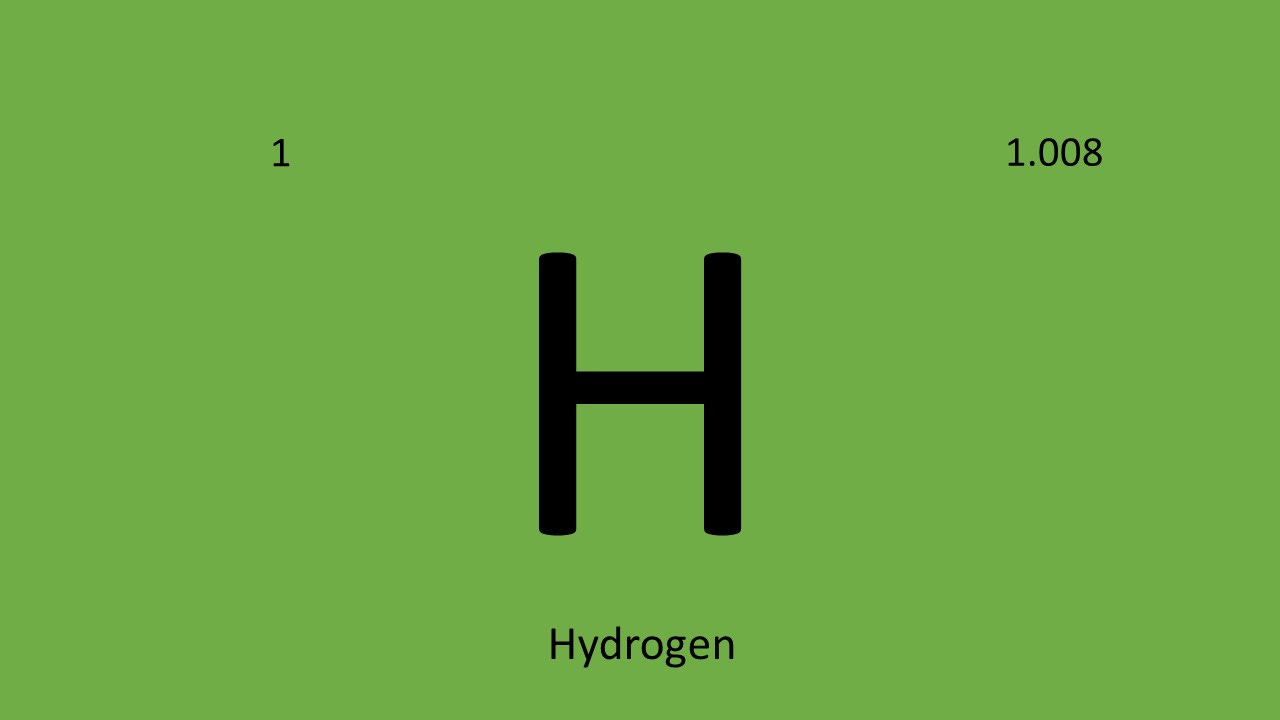
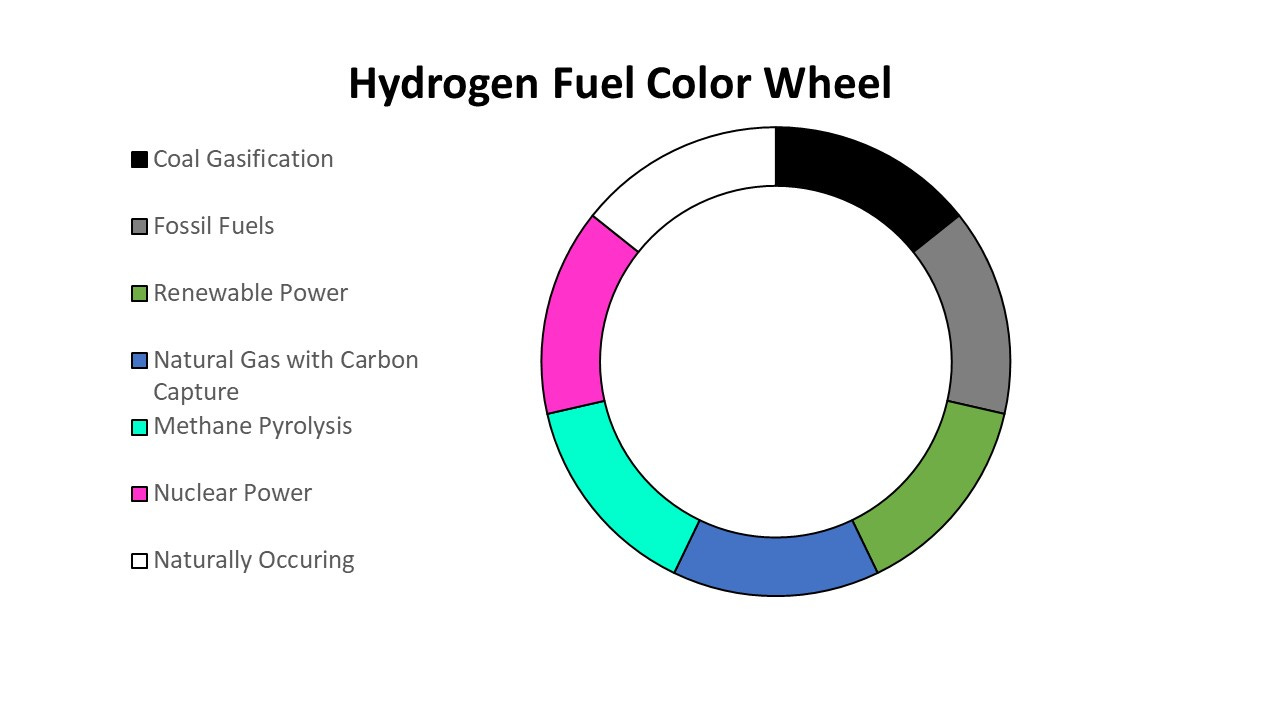
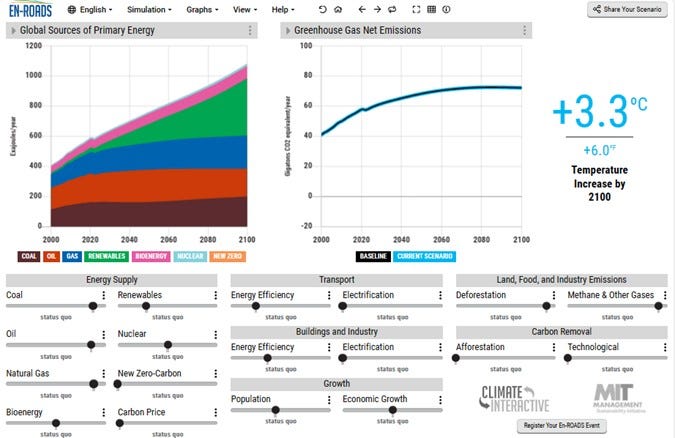
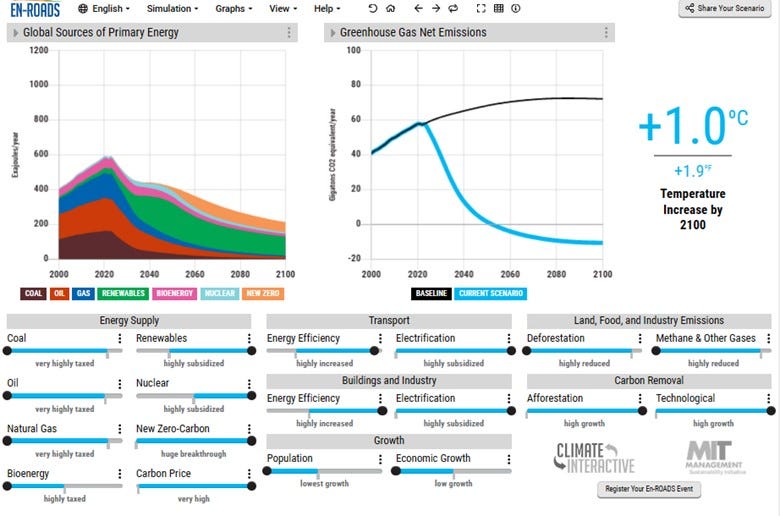
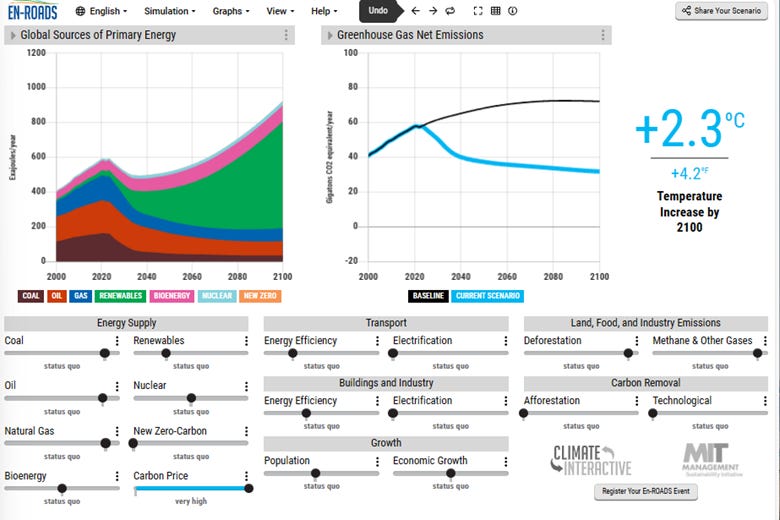
I am going to point out a barrier to these changes that is ignored by everyone.
Our economic system is based on a commodity that does not exist in the real universe: our money, the way we create, define, and use it.
Every commodity in our universe obeys the laws of thermodynamics in precisely the way our money doesn't. This is partly accidental, and partly (in the past century) design. The evolution of money over 5000 years, predated the understanding of the laws of thermodynamics by about 4500 years. We create money as debt with interest, define it by the way we use it and use it as though it can break the laws.
Nothing can do that.
So we break everything else.
Because "growth" is built into the definition of our money. Did you never wonder why inflation has to always exist? Why it has to always balance around some positive number? Why a steady state economy is such an anathema to our economists? I'm not the first to point this out. Frederick Soddy pointed it out a century ago, but not being an economist, was ignored. Margrit Kennedy pointed it out 2 decades ago, but not being an economist, was ignored.
I expect to be ignored as well, but I have done something they did not do. I set down the details of the changes to our economic system that have to be part of any social change in the definition of our money.
The neoliberals complain mightily that it is about destroying capitalism. It turns out that they are correct, but the capitalism they worship is merely roadkill along the way to the actual goal of the process.
http://firstmakeitwork.org/2023/09/16/making-money-real/